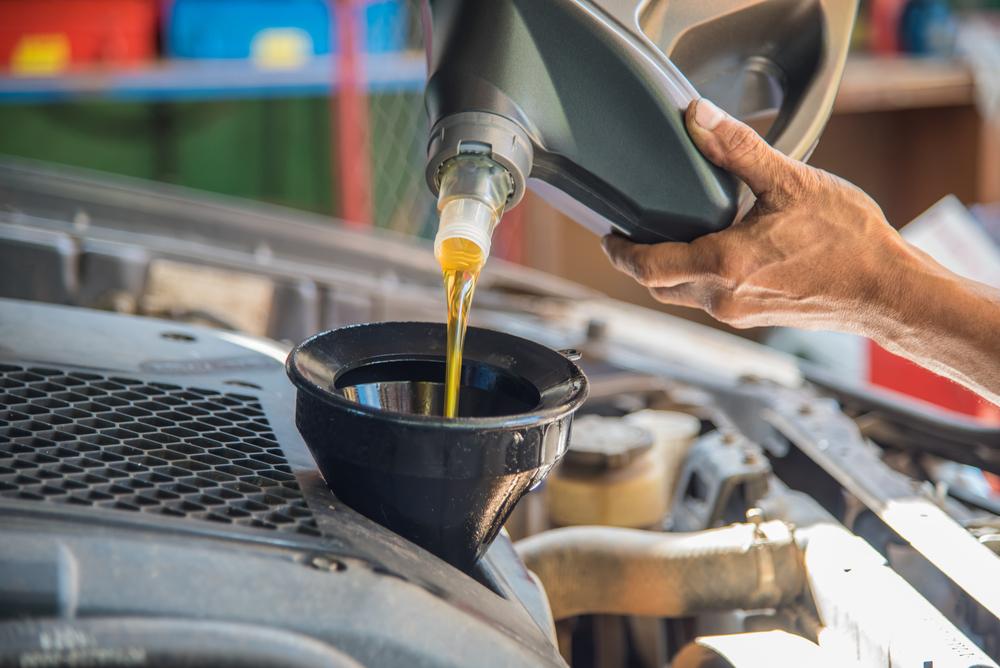Comprehensive Guide to Inspecting and Maintaining Your Vehicle's Transmission Fluid
Ensuring your vehicle’s transmission system remains healthy is vital for safe and efficient driving. This comprehensive guide covers the importance of transmission fluid, how to check and assess its condition, and tips for routine maintenance. Regular inspections prevent costly repairs, improve vehicle performance, and extend the lifespan of your transmission. Learn expert advice on choosing the right fluid, recognizing signs of wear or leaks, and maintaining optimal transmission health for a reliable automotive experience. Keep your vehicle running smoothly with proactive transmission care.

Comprehensive Guide to Inspecting and Maintaining Your Vehicle's Transmission Fluid
Maintaining your vehicle’s transmission system is a crucial aspect of overall car care that often gets overlooked. While many drivers focus on regular oil changes, tire rotations, and brake inspections, checking and maintaining the transmission fluid is equally vital to ensure your vehicle runs smoothly and reliably for years to come. Proper transmission fluid management can save you from costly repairs and extend the lifespan of your vehicle’s transmission system. This detailed guide walks you through every aspect of inspecting, assessing, and maintaining your vehicle’s transmission fluid to help you become proactive in your car maintenance routine.
Understanding the Role of Transmission Fluid
Transmission fluid plays a fundamental role in the operation of your vehicle’s transmission system. It functions as a lubricant for the moving components within the transmission, helping reduce friction and prevent wear and tear. Additionally, transmission fluid acts as a coolant, dissipating heat generated during gear shifts and driving conditions that involve high loads or speeds. Without sufficient or proper-quality fluid, the transmission can overheat, leading to sluggish shifts, slipping gears, or even complete transmission failure. Using the manufacturer-recommended transmission fluid type is imperative to guarantee optimal performance and avoid damage. Be sure to consult your vehicle’s owner’s manual to find the specific fluid specifications suitable for your car model.
Choosing the correct transmission fluid is critical. Most vehicles have a designated type of transmission fluid engineered specifically for their transmission system. Before adding or replacing transmission fluid, always refer to your vehicle’s owner’s manual to verify the exact specifications. Accessing the transmission fluid is often straightforward; many cars have a dedicated dipstick located either under the hood or beneath the vehicle’s chassis. If you’re unsure about how to locate or inspect your transmission fluid, consulting a professional mechanic is highly recommended. Proper inspection and maintenance routine can significantly prolong the lifespan of your transmission and prevent costly breakdowns.
Why Monitoring Transmission Fluid Is Important
Regularly checking your transmission fluid helps in maintaining the optimal functioning of your vehicle’s transmission system. Proper fluid levels ensure efficient heat dissipation, reduce friction, and keep the internal components well-lubricated. When the transmission fluid becomes old, contaminated, or leaks out, it can lead to poor shifting performance, increased wear on internal parts, and eventual system failure. By keeping an eye on the fluid’s condition and levels, you can catch problems early and avoid emergency repairs. Routine inspection acts as a safeguard—not only protecting your vehicle but also saving you money in the long run.
Faulty transmissions can be costly to repair or replace, often costing thousands of dollars, depending on the extent of damage. Fortunately, inspecting your transmission fluid is an accessible maintenance task that can be performed with minimal tools and expertise. A simple visual check using a clean cloth or paper towel can reveal much about the health of your transmission system.
Step-by-Step Guide to Checking Transmission Fluid
Automated transmissions generally require specific types of fluids similar to engine oil; however, some models such as Continuously Variable Transmissions (CVTs) or dual-clutch transmissions utilize different fluids. Always double-check your owner’s manual for the correct type. The process begins by locating the transmission dipstick, often marked with a distinctive color or icon indicating transmission fluid. With the engine running and at operating temperature, remove the dipstick, wipe it clean with a lint-free cloth, then reinsert it fully before pulling it out again. Observe the fluid level and condition. The ideal level should be between the ‘full’ and ‘low’ marks, and the fluid should have a bright reddish-pink hue. If the level is low, topping off with the appropriate fluid may be necessary. If you notice dark, murky, or burnt-smelling fluid, it’s a sign that the internal components may be contaminated or excessively worn, indicating a need for a fluid change or professional inspection.
Note: Some modern vehicles have sealed transmissions without a accessible dipstick. In such cases, routine checks are not feasible, and the manufacturer’s recommended service intervals should be followed. Always consult your manual or a specialist to determine if and when transmission fluid inspection or replacement is required.
Evaluating the Condition of Transmission Fluid
When assessing the transmission fluid, place a sample on a white surface or use a white cloth to closely inspect its color and clarity. Fresh, healthy transmission fluid appears bright and reddish-pink, indicating proper lubrication and temperature regulation. Over time, the fluid may darken to brown or black, which suggests oxidation, deterioration, and possible contamination. An unusual burnt smell or the presence of metallic particles indicates internal wear or damage within the transmission system. Regularly changing the fluid at manufacturer-recommended intervals—generally every 30,000 to 50,000 miles—can prevent severe problems related to burnt or degraded fluid. Preventive maintenance enhances performance, improves fuel efficiency, and prolongs the lifespan of your transmission.
Detecting and Addressing Leaks
One clear sign of transmission trouble is a rapid decline in transmission fluid levels. If you notice your dipstick reading is consistently below the recommended level, it might be due to a leak. Common leak sites include seals, gaskets, or transmission pan components. Regularly inspecting underneath your vehicle for puddles of reddish fluid and monitoring fluid levels can help you catch leaks early. Addressing leaks promptly through professional repairs can prevent severe damage to internal transmission parts and costly replacements.
Recommended Maintenance Schedule
For optimal performance, it’s advisable to check your transmission fluid at least once a year or every 30,000 to 50,000 miles, whichever comes first. Consistent inspections and fluid level maintenance ensure smooth gear shifts, efficient operation, and long-term reliability. If you notice abnormal shifting, slipping, or if the fluid condition deteriorates quickly, seek professional diagnostics immediately. Early intervention can save you from expensive repairs and extend the life of your vehicle’s transmission system.
In conclusion, maintaining proper transmission fluid levels and condition is essential for vehicle longevity and safety. Regular inspections, timely replacements, and addressing leaks promptly can markedly improve your driving experience and prevent costly failures. Don’t overlook this critical aspect of routine vehicle maintenance—taking care of your transmission today ensures a smoother ride tomorrow.





